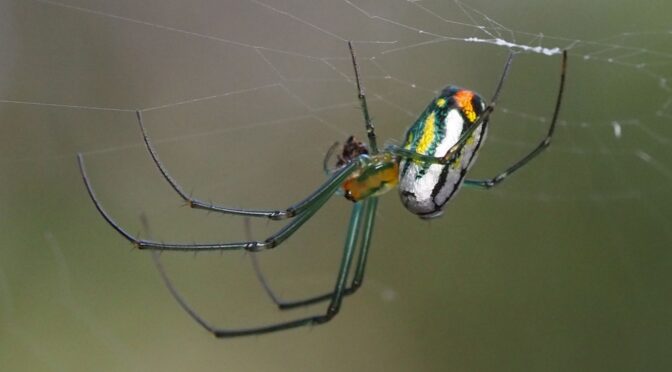Many people aren’t big fans of spiders, but as gardeners, they’re easy to appreciate. They’re amazing predators helping protect our crops! In the past, we’ve covered some bees and predatory insects native to the Southeastern US, but I thought spiders deserved their own post. They have a surprising amount of variation from their appearance to their hunting style. Keep reading to learn more about five southeastern spider species you may see in your garden.
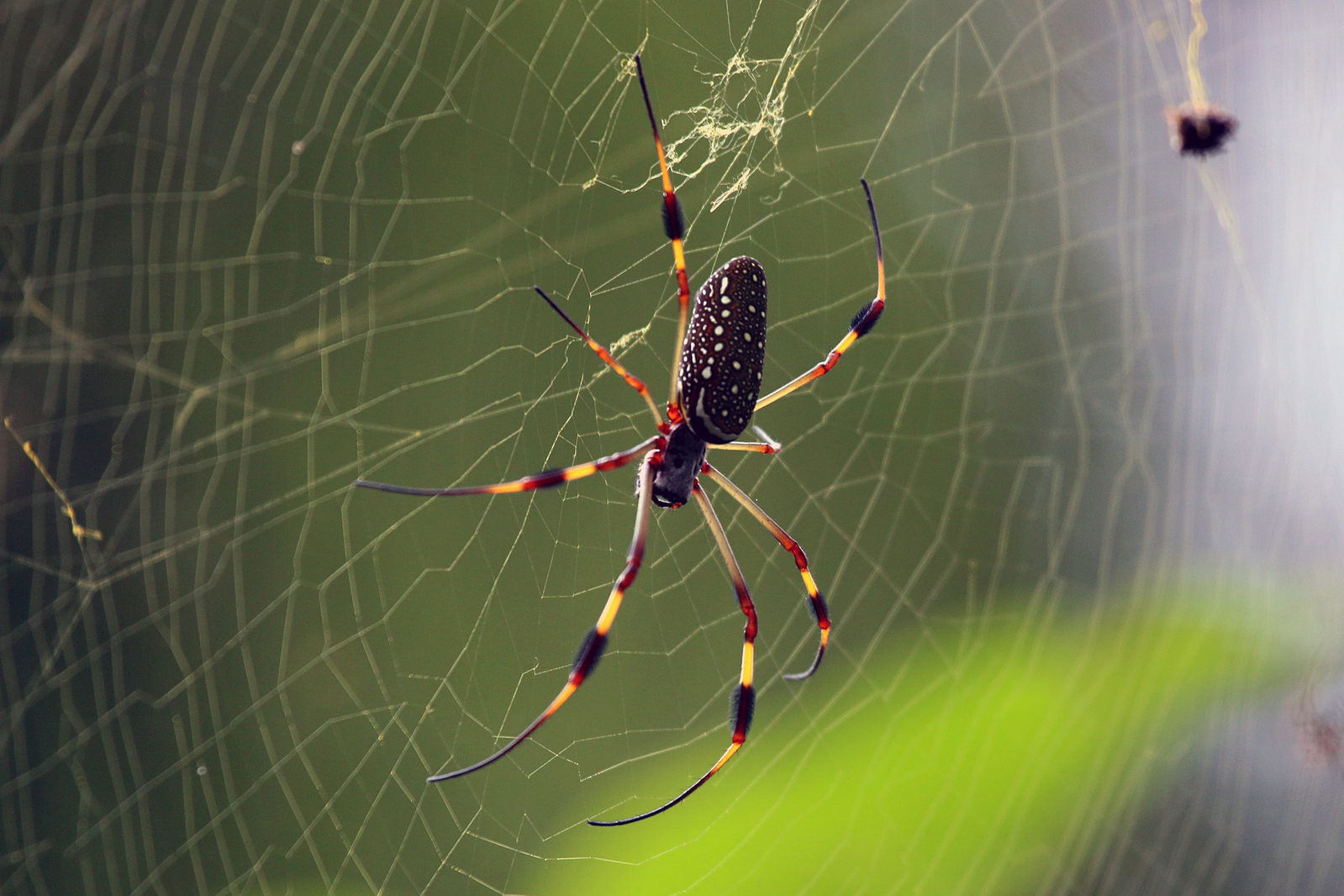
Golden Silk Spider (Trichonephila clavipes)
These stunning spiders are amazing web builders that produce seven types of silk! Adult females produce enormous webs up to 6.6 feet wide, often anchoring them to shrubs or trees. They sit near the center of their webs, waiting for prey like flies and grasshoppers to fly into the web.
Adult males are smaller and darker colored. They generally produce smaller webs near a female and can occasionally be found in a female’s web. These spiders only produce one generation per year.
You may have also heard them called golden silk orb weavers or banana spiders, though several spiders are known by that name. They thrive in areas with high humidity in parts of South and Central America and the eastern United States, occasionally as far north as Canada.
Golden Silk Spiders are not aggressive or dangerous. They will only bite if roughly handled, and their bites typically only cause mild redness and pain and are considered milder than a bee sting. That said, these garden allies should be respected.
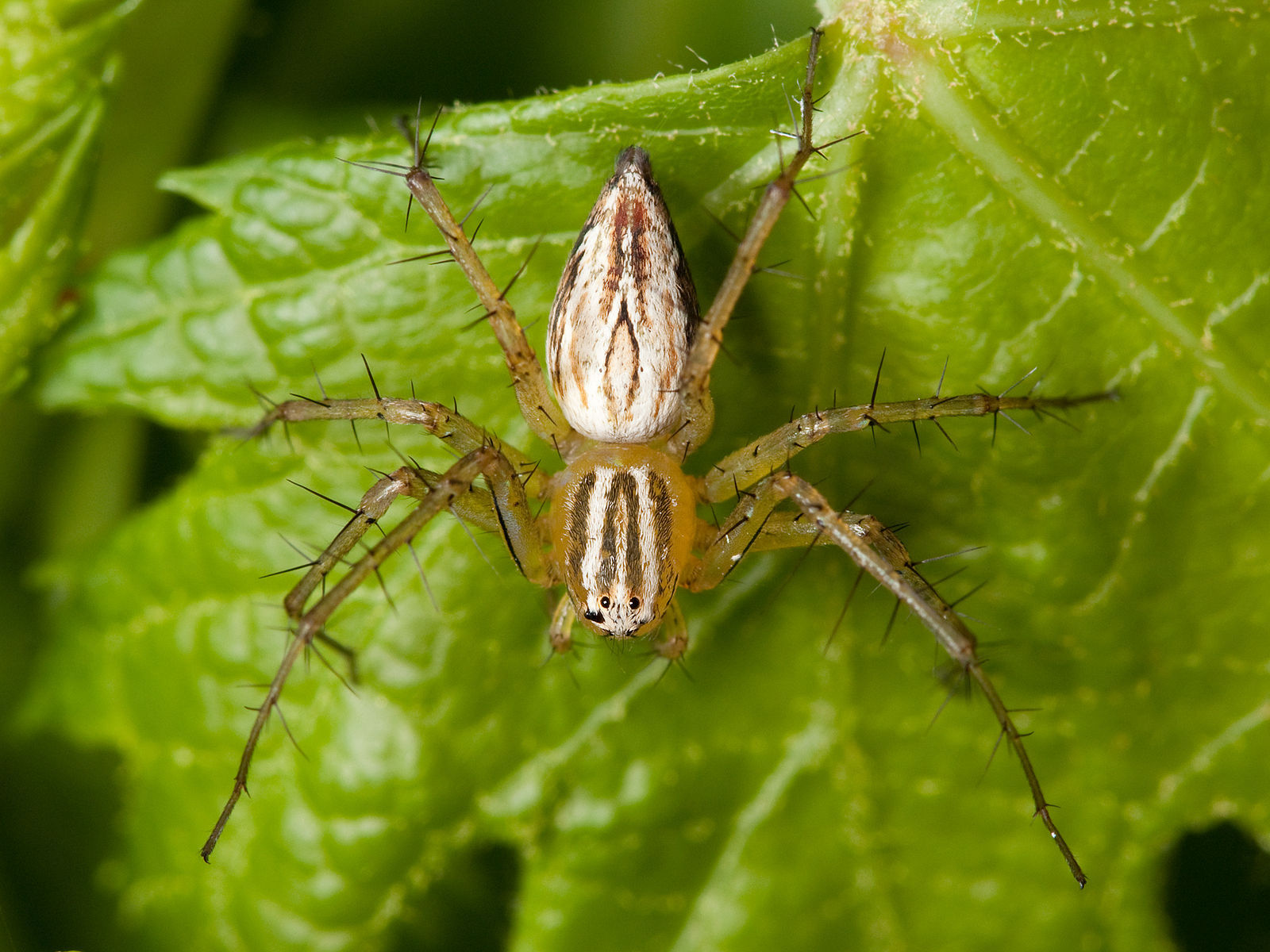
Striped Lynx Spider (Oxyopes salticus)
You may not have noticed this little spider before, but they’re often abundant in yards, gardens, and agricultural areas. They get their name from their cat-like hunting style. They don’t build webs but stalk and then leap on their prey. They feed on numerous agricultural pests, including the southern green stink bug, tobacco budworm, and bollworm.
Studies have shown that Striped Lynx Spiders can detect the odor given off by prey. Unfortunately, scientists have also found that these athletic little spiders are heavily affected by pesticide use.
Females typically only mate once and produce a small egg sac. Spiderlings hatch about 20 days later and disperse using a method called ballooning, where they release silk into the air, which is caught by the wind carrying them to a new location.
Striped Lynx Spiders are non-aggressive, and their bites aren’t known to cause serious medical issues.
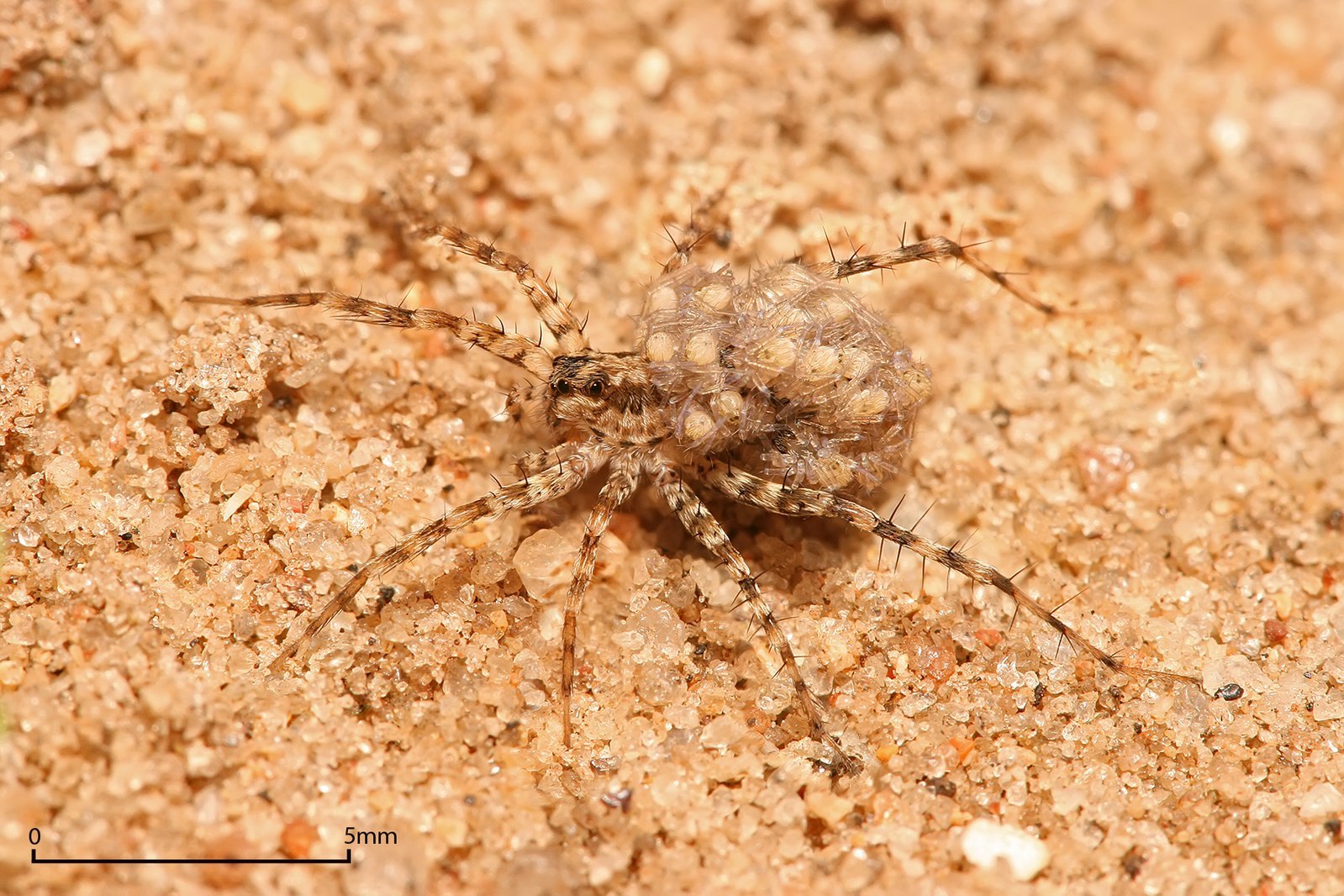
Wolf Spiders (Lycosidae)
Numerous species of wolf spiders are found in the Southeastern United States. You may find them in the garden when flipping over mulch or other materials. They build retreats or shelters in the soil or under logs, rocks, or other debris.
These large hunting spiders are active at night when they run down their prey. They mate in autumn, and the males die while the females overwinter in protected areas. The females produce egg cocoons the following spring and then carry the spiderlings on their backs after hatching.
These spiders may bite if roughly handled or trapped against the skin. Their bite can cause redness, localized swelling, and pain but isn’t known to cause any serious medical issues.
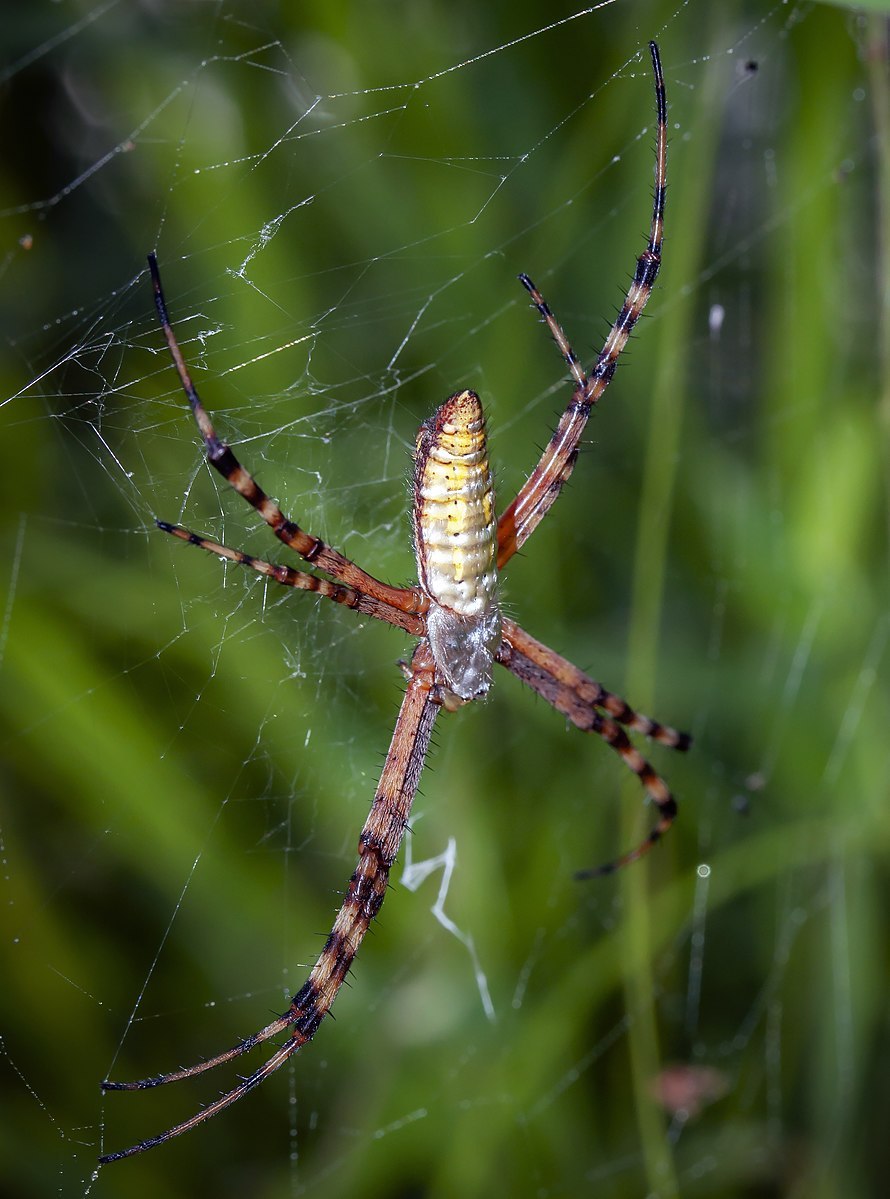
Banded Garden Spider (Argiope trifasciata)
Banded Garden Spiders produce large, concentric webs on east to west axis, which they attach the webs to stems, branches, or other plant material. You may notice zigzag silk banners in their webs. These are believed to help attract certain types of prey and deter birds from hitting them.
These spiders often sit in the center of their web, holding their legs in an x-shape. They feed on anything entrapped in the web, including mosquitoes, flies, grasshoppers, aphids, and even wasps.
Banded Garden Spiders have a short lifespan. They mate in late summer or early fall and the females deposit an egg sac before dying. The new spiderlings hatch the following spring.
These spiders are non-aggressive and often drop from their web to escape if disturbed. Their bite is typically milder than a bee sting.
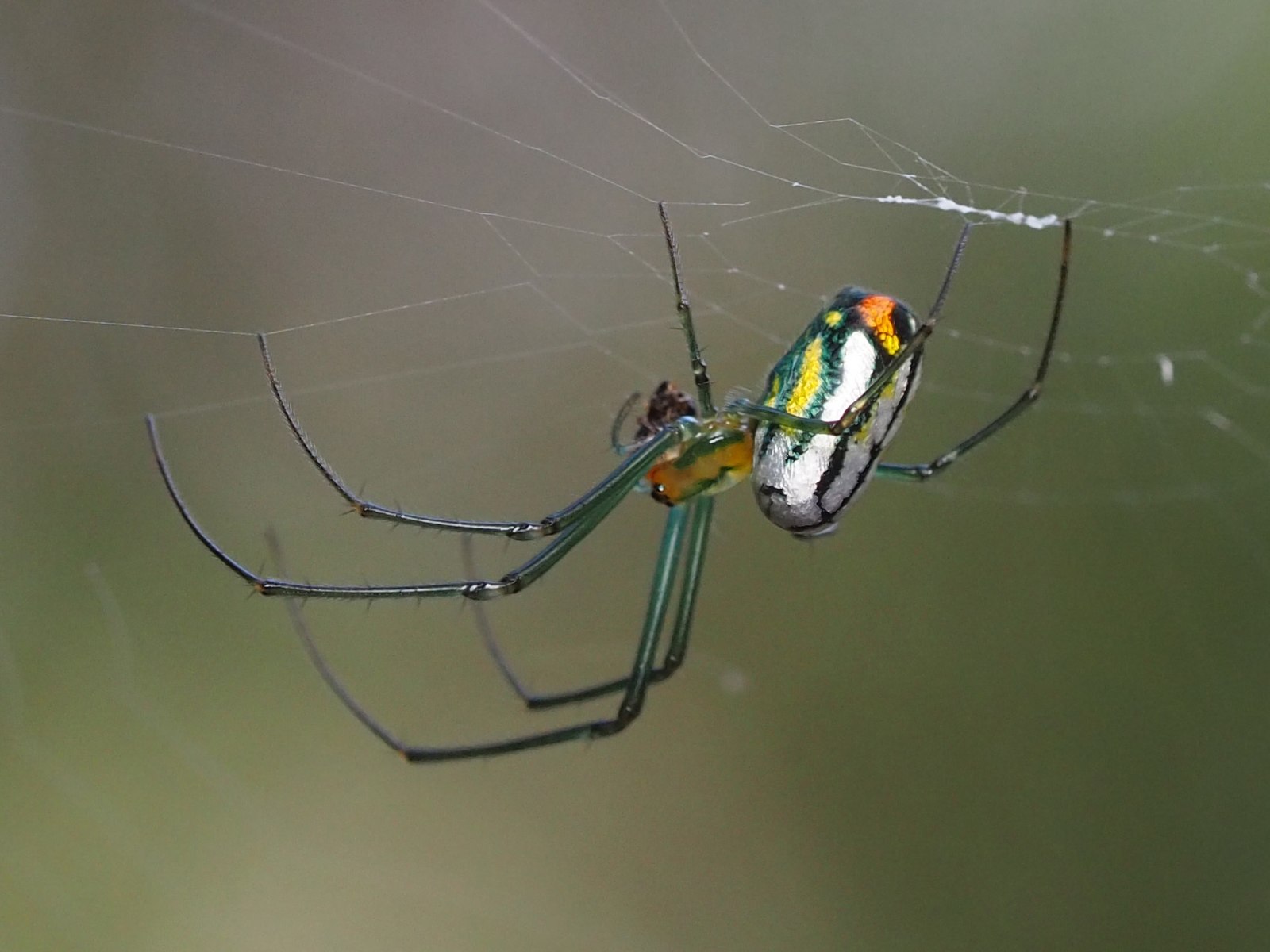
Mabel Orchard Orbweaver (Leucauge argyrobapta)
As their name suggests, these stunning spiders are often found in orchards! However, they may also be found in shrubby meadows, suburban areas, and forest edges.
Like other orb weavers, Mabel Orchard Orb Weavers construct webs that they sit in and wait for prey. They may also construct barrier webs around their web, which help deter predators and birds from destroying their web. Interestingly, these friendly spiders may connect their webs together when prey is plentiful. They’re also often found near Golden Silk Spiders.
Mabel Orchard Orbweavers primarily feed on small insects like mosquitoes and small flies. Like Banded Garden Spiders, they have a relatively short lifespan, breeding and dying in early fall, while an egg sac overwinters.
These beautiful little spiders avoid human contact when possible and will drop from their web if they feel threatened. Their bite is milder than a bee sting and has no known serious effects.
Spiders can be scary for many people, but their incredible allies for gardeners. Hopefully, learning a bit more about five of the spiders you might see in your southeastern garden helps you appreciate them a little more.

